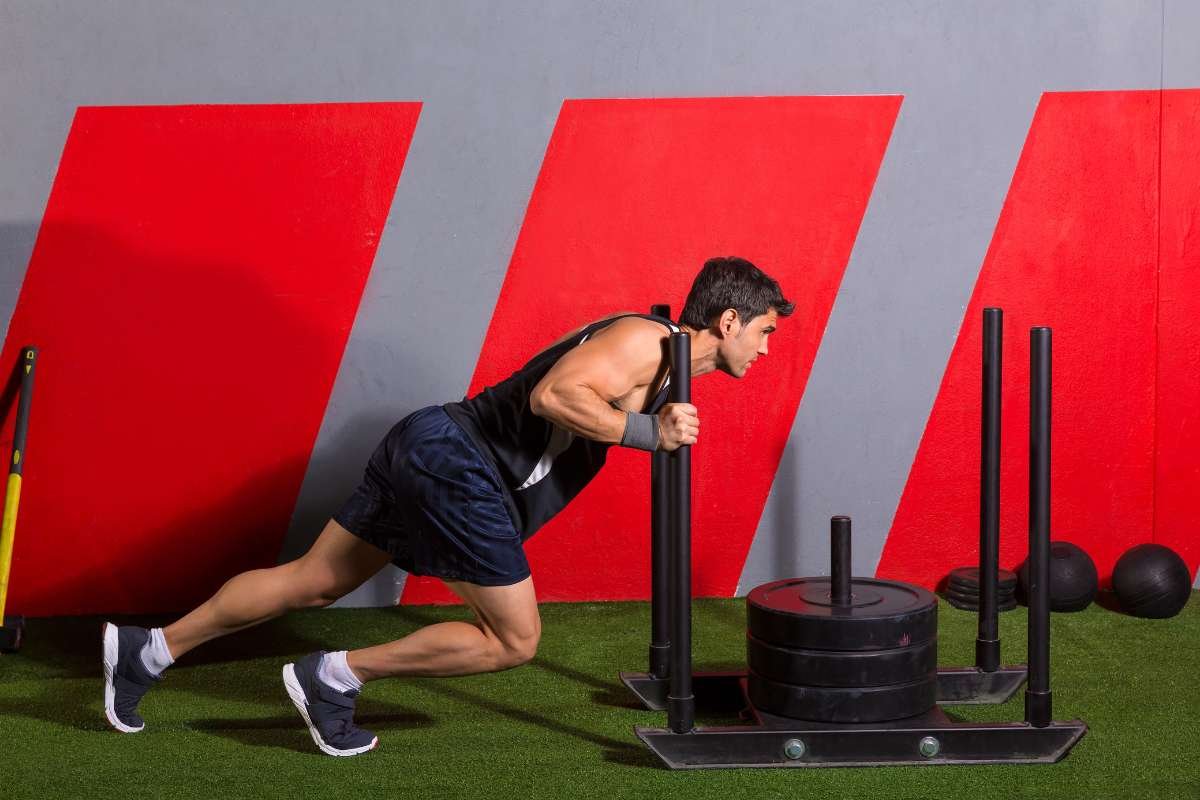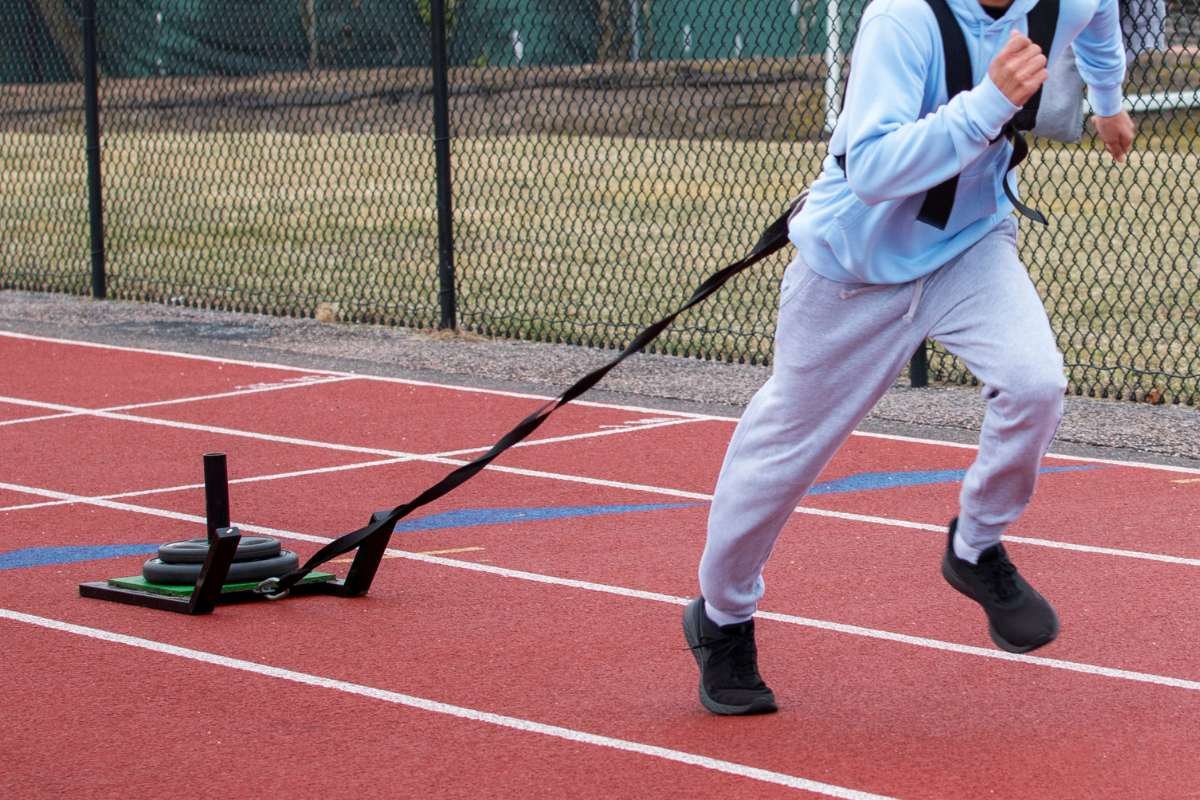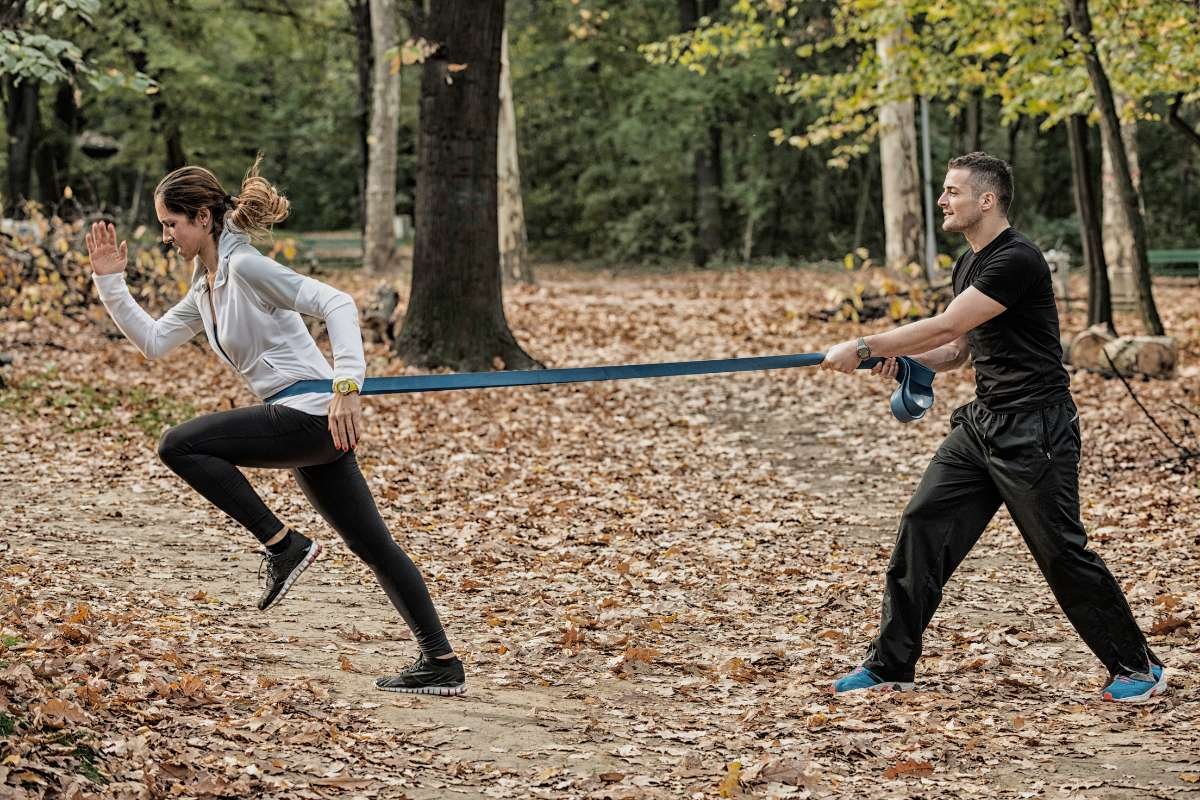Ever watched a cheetah chase its prey and thought, “Wish I could run like that”?
Well, good news, you can get close (minus the tail). That’s where sled sprint training comes in. It’s not some boring treadmill workout where you scroll through your phone waiting for the timer to beep. Nope. This one’s about raw power, explosive energy, and feeling like an athlete every time you push that sled.
Imagine loading weights on a sled, taking a deep breath, and charging forward with everything you’ve got. Your legs burn, your heart races, and your mind screams, Go! It’s tough, but in a “I feel like a superhero” kind of way. Resisted sprint training isn’t just about speed, it’s about building muscle, boosting stamina, and learning to love the grind that makes champions.
So, if you’re tired of lazy workouts and want something that actually works (and makes you feel unstoppable), keep reading. This guide is your ticket to mastering sled sprint training, one push at a time.
What is Sled Sprint Training?
Sled sprint training is also called “Resisted sprint training”. Resisted sprint training is a workout where you push or pull a weighted sled over short distances as fast as possible. It’s often used by athletes to build explosive speed, strength, and acceleration. Think of it as resistance sprinting; you’re teaching your body to move powerfully under pressure.
You can use it on grass, turf, or a running track with the right sled. The resistance makes your muscles work harder than regular sprinting. Over time, it trains your nervous system to fire faster and your muscles to respond quicker.
In short, it’s the kind of workout that turns “I can’t” into “Watch me.”
The Benefits of Sled Sprint Training
1. Builds Explosive Power

Pushing a sled challenges every muscle from your glutes to your calves. It improves your ability to accelerate, a key skill for athletes in football, soccer, and track. Studies from the Journal of Strength and Conditioning Research show that resisted sprinting improves start speed and running efficiency.
2. Boosts Speed and Acceleration
Sled sprint training helps improve your stride length and frequency. Since you’re running against resistance, your muscles adapt by becoming faster and stronger during unweighted sprints. It’s like training in “hard mode,” so regular running feels easier later.
Similar Article: Want Speed and Strength? Try These Best Sprinting Workouts Proven by Science
3. Builds Leg and Core Strength
Each push activates your quads, hamstrings, glutes, and core. Over time, this builds strength where it counts. You’ll notice better balance, posture, and even endurance for everyday activities, like climbing stairs without gasping for air.
4. Enhances Conditioning
Forget long, boring cardio. Pushing sleds for short bursts gets your heart pumping and builds endurance faster. It’s a total-body workout that burns fat while increasing stamina.
5. Low Impact, High Results
Unlike jumping or heavy lifting, sled workouts are easy on your joints. You get all the power-building benefits without the pounding impact of other high-intensity workouts.
How to Do Sled Sprint Training the Right Way?

You don’t need to be an athlete to start. Just follow these steps:
- Warm Up Properly: Start with light jogging, dynamic stretches, and mobility drills. Your body should feel ready to explode, not stiff.
- Choose the Right Weight: Beginners should start light, around 10-20% of their body weight. As you get stronger, increase gradually.
- Keep Good Form: Lean slightly forward, keep your core tight, and drive with your legs. Avoid hunching over or dragging the sled with your arms.
- Short Bursts, Full Power: Sprint for 10-30 meters. Focus on explosive effort, not distance. Rest between sets to keep intensity high.
- Mix It Up: Alternate between pushing and pulling the sled to work different muscle groups. Add backward sled drags to strengthen knees and hamstrings.
Sample Sled Sprint Training Workout
This mix builds power, control, and acceleration all at once. Keep your movements fast and explosive.
| Exercise | Distance | Rest Time | Sets |
| Sled Push (light weight) | 20 meters | 60 sec | 4 |
| Sled Sprint (medium load) | 15 meters | 90 sec | 5 |
| Sled Pull (backward) | 10 meters | 60 sec | 3 |
| Sprint without a sled | 30 meters | 90 sec | 4 |
Facts About Sled Sprint Training
- Fact 1: A study by PubMed Central showed that sled sprinting with 20-30% bodyweight load significantly improved 10-meter and 20-meter sprint times in athletes.
- Fact 2: Sled sprints improve lower-body power output by up to 15% over six weeks of consistent training.
Common Mistakes to Avoid

- Too Much Weight: Loading too heavy slows you down and ruins form. It’s about speed, not showing off.
- Poor Posture: Keep your back neutral. Rounding it puts stress on your spine.
- Skipping Rest: Your body needs recovery to perform at peak power each sprint.
- Ignoring Surface Type: Pushing on rough or sticky surfaces can damage your sled or make movement uneven. Always use smooth turf or grass.
Who Should Try Sled Sprint Training?
Anyone looking to get faster, stronger, or fitter.
It’s ideal for:
- Athletes are improving their sprint speed.
- Fitness enthusiasts who love intensity.
- People want low-impact, full-body workouts.
- Teams are training for sports performance.
Also Read:
- 12 Fitness Trends for 2025
- Recovery Exercises for Athletes: Boosting Performance and Preventing Injuries
- 5 Ways to Increase Adductor Strength
Even if you’re not competing, sled sprint training gives you the rush of athletic movement and the results to match.
Safety Tips
- Always warm up before and stretch afterward.
- Keep hydration in check.
- Start light and progress weekly.
- Train 2-3 times a week, not daily, to allow muscle recovery.
Conclusion
Here’s the truth: sled sprint training is tough. You’ll sweat, gasp, and maybe even curse a little. But every push takes you closer to that version of yourself who doesn’t quit. It’s not just a workout; it’s a mindset. You’re training your body to go harder and your mind to stay sharp under pressure.
So next time someone asks what you’ve been doing at the gym, smile and say, “Just pushing sleds and limits.”
Because that’s what sled sprint training does: it builds speed, power, and a little bit of swagger too.







